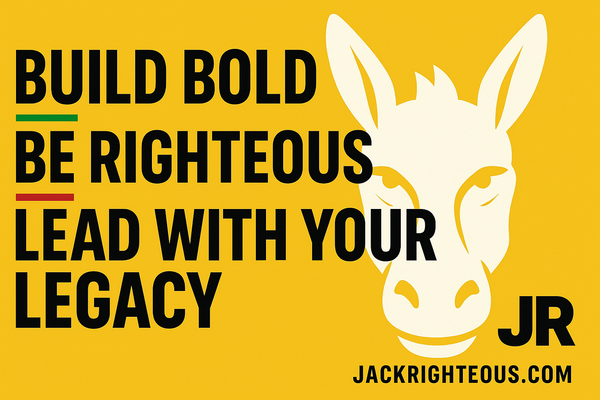
Black Horseman: Famine, Scales, and Injustice
Gary Whittaker✝️ The Black Horseman – Scales, Scarcity, and Economic Judgment
Soundtrack to Prophecy: Listen While You Read
This article pairs with my militant AI-generated anthem "Fire Pon Rome" — a prophetic war cry against corrupt empires and false rulers.
Spotify: Fire Pon Rome
YouTube: Watch the Video
Full Lyrics on Suno: Read the Lyrics Here
"Dem call fi justice — but play di fraud / Babylon crumble when scrolls unfold…"
— Fire Pon Rome
As you read about the Black Horseman, let the music guide you deeper into the judgment it reveals.
When the third seal is opened, the rider emerges—not with violence, but with economic imbalance. The Black Horseman carries scales and imposes prices that make survival impossible for many.
This is a prophecy of injustice, not just hunger.
Revelation 6:5–6 – The Black Horse Appears
"When He opened the third seal… behold, a black horse! Its rider had a pair of scales… ‘A quart of wheat for a denarius, three quarts of barley for a denarius; but do not harm the oil and the wine!’"
— Revelation 6:5–6 (ESV)
🔍 Breaking Down the Symbols
The Color Black
- Black in Scripture signals mourning, scarcity, despair.
- Unlike the Red Horseman, this expresses slow suffering.
The Scales ⚖
- Pair of scales measures grain—symbol of rationing.
- Echoes Leviticus/Ezekiel: famine as measured survival.
- Reflects economic control: survival as a luxury.
The Prices 💰
- A denarius equals a day’s wage.
- A quart of wheat feeds one person for a day—costs a full wage.
- Survival demands full labour—no savings or margin.
This isn’t just famine—it’s economic oppression.
Oil and Wine Clause
“Do not harm the oil and the wine.”
Two views:
-
Protection of Luxury Goods
- Oil & wine deemed non‐essentials.
- Suggests wealthy remain untouched.
-
Mercy Amid Judgment
- Suffering is not total—some resources preserved.
- A window for repentance.
🔄 Interpretations of the Black Horseman
1. Literal Famine
- End‑time food shortages (Matthew 24:7).
2. Economic Collapse & Injustice
- Systems that exploit the poor.
- Modern parallels: inflation, suppressed wages, hoarding.
3. Prophetic Exposure of Corrupt Systems
- This rider reveals injustice.
- Exposes profiteering during scarcity.
"Dem sell out truth fi silver chain / Trade di people fi profit gain…"
— Fire Pon Rome
This mirrors today: profit prioritized over people, justice buried under policy changes—especially since July 1, 2025.
Why This Rider Still Matters
Judgment doesn’t always come with fire—it comes with receipts and price tags.
A day’s wage that won’t buy bread signals judgment is underway.
What You Can Do — Prophetic Creativity in the Age of Collapse
The Black Horseman rides to expose injustice and awaken us.
Listen to “Fire Pon Rome”:
Comment below — what do you hear in this prophecy? In this song? How does this show up globally in 2025?
Want to Create Your Own Prophetic Track?
You don’t need a studio. You need fire, truth, and tools:
- ✅ Use Suno AI for Free – Invite Link
- ✅ Download the Free AI Music Starter Kit
- ✅ Write with the JR Righteous Lyrics Lab GPT
The scrolls are open. Now it’s your turn to Tell Dem.
Explore the Full Series: Decoding the Four Horsemen of the Apocalypse
This is part of a 7-part series on the Four Horsemen.
Read all parts:
Related Series: Trump Evangelicals vs. Biblical Christianity
